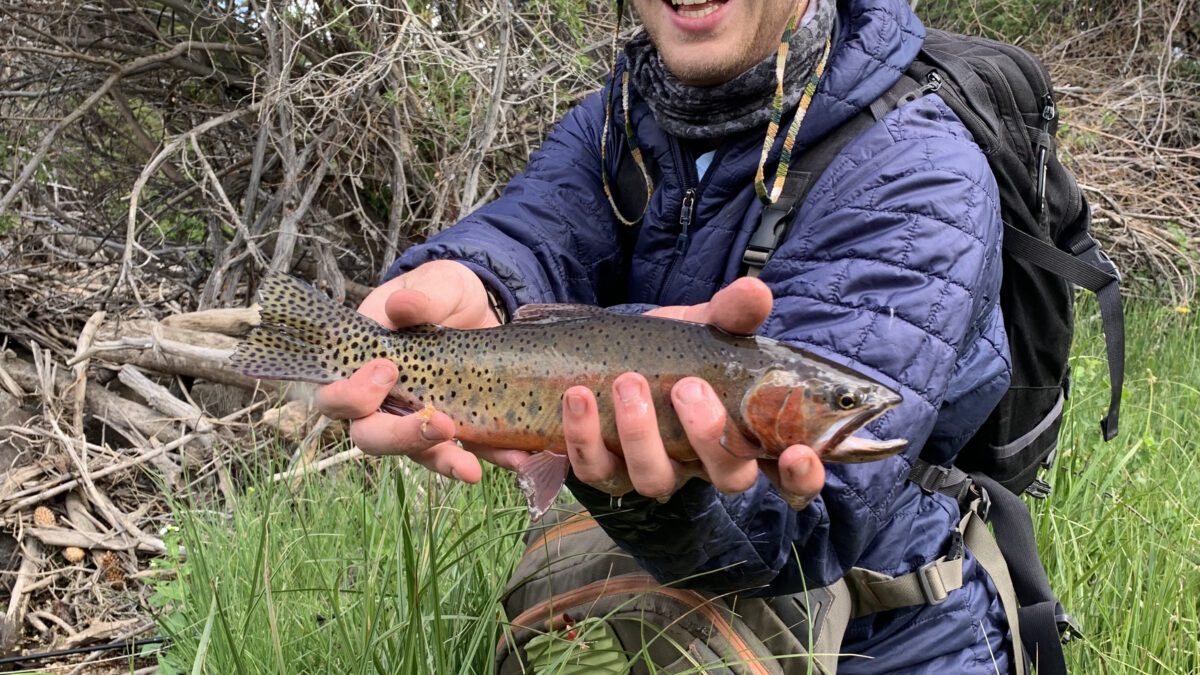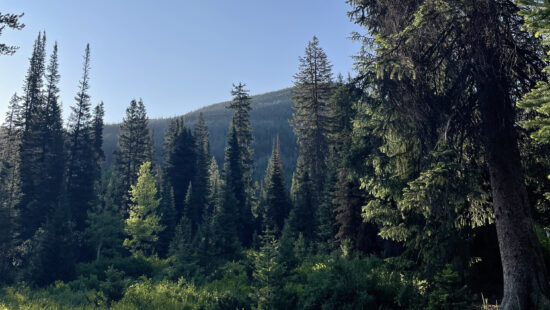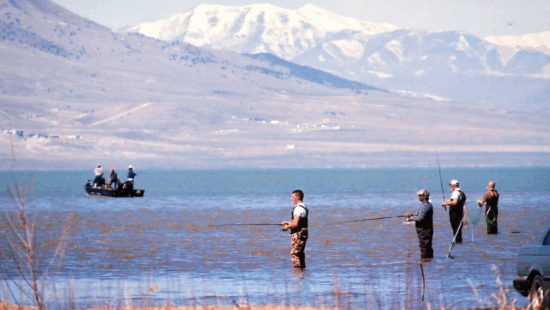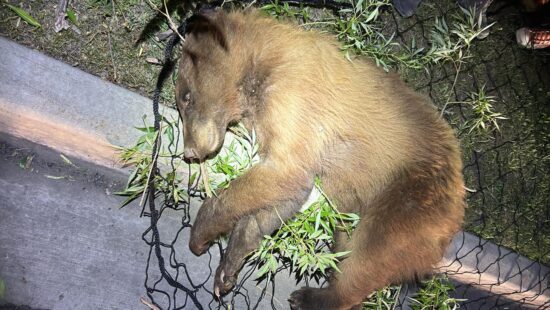Wildlife
DWR working to restore native cutthroat trout in High Uintas

A native Colorado River cutthroat trout caught in Utah. Photo: Sean Scadden
UTAH – The Utah Division of Wildlife Resources (DWR) will be conducting several waterbody treatments this summer in an effort to restore native Colorado River cutthroat trout in the High Uintas wilderness.
DWR biologists will be treating several waterbodies with rotenone, a natural occurring substance, to try and remove non-native fish species that have grown to dominate the area.
DWR biologists have been utilizing rotenone in Utah’s waterbodies for the past several years, and the naturally occurring substance comes from the roots and seeds of several tropical plants. It works as a respiratory toxin on fish, preventing oxygen transfer and cellular respiration, but it is not dangerous to people, pets or other wildlife in the extremely low quantities that biologists use to treat streams and lakes.
The treatments will help to rid the non-native brook trout, cutthroat trout, and rainbow trout that are currently living in the waterways. In fewer than 20 years, according to biologists’ predictions, brook trout populations in these regions might fully displace native cutthroat trout.
This year, biologists will be conducting treatments in the following areas in the High Uintas:
- Oweep Creek drainage (south slope) from July 31 to Aug. 4 (The area should reopen to the public on Aug. 6).
South Fork Sheep Creek (north slope) from Aug. 28-30 (The area should reopen to the public on Sept. 4).
Daggett, Penguin, Upper Anson and Lower Anson lakes (north slope) from Aug. 28-29 (The area should reopen to the public roughly Sept. 20).
Porcupine Lake (south slope) from July 31 to Aug. 4 (The area should reopen to the public around Aug. 18).
There will be a lot of crew and equipment in the area throughout the treatments, and the U.S. Forest Service will be closing the affected areas to the general public. The DWR will also issue an emergency change for all lakes in the South Fork Sheep Creek drainage so that anglers can harvest more fish prior to the treatments.
“The temporary closure of the treatment area only affects treated waters and prohibits the public from entering the water and obtaining drinking water from sources in the treatment area. All hiking trails and other access will remain open to public use,” said Tonya Kieffer-Selby, DWR Northeastern Region outreach manager. “The treatment areas will be well signed and will reopen after the treatment process is over and rotenone levels are no longer detectable in the streams.”
After treatment has been conducted, the DWR plans to restock the Oweep Creek drainage; Porcupine Lake and its nearby streams; and the Daggett, Penguin and Anson lakes (upper and lower) in 2024 with native Colorado River cutthroat trout. A series of two to three treatments is standard protocol for effective cutthroat trout restoration.
Biologists will treat the South Fork of Sheep Creek once more in 2024 and most likely once again in 2025 as this is the second year of treatments in the Oweep Creek drainage. The South Fork of Sheep Creek won’t be restocked until the treatments have been completed, most likely in 2025. The treatment of the north slope is a component of a larger project to treat the higher sections of streams that flow into the Sheep Creek canal. This project aims to increase the cutthroat trout population and prevent it from being categorized as an endangered species in order to help save the species.
“As the trustee and guardian of wildlife in Utah, we’re conducting Colorado River cutthroat trout restoration work across the fish’s native range,” said Bryan Engelbert, DWR regional sportfish biologist. “The activities will protect the species, while also providing people with great areas to fish for these native fish.”



















